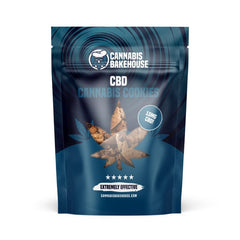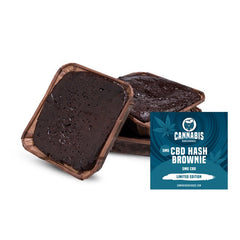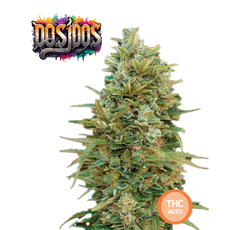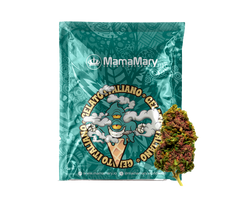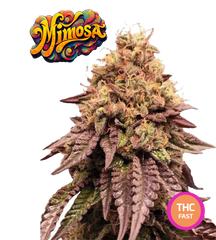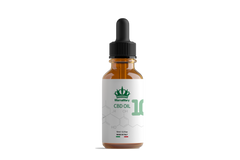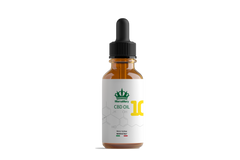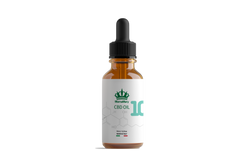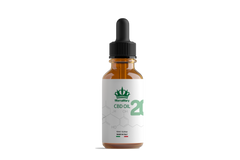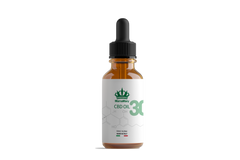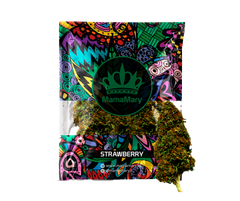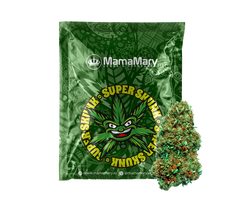Everything You Need to Know About Cannabis Milk: Recipe and Potential Benefits

Cannabis milk is an ancient and versatile drink that combines the beneficial properties of cannabis with the nourishment of milk . More and more people are turning to this preparation not only for its potentially relaxing effects, but also for the possibility of using it as a base in many recipes. In this post, we will explore how to make cannabis milk , the benefits it can offer and we will walk you through a simple recipe that you can try at home.
What is cannabis milk?
Cannabis milk is a beverage made by infusing cannabis or hemp in high- fat milk , which allows cannabinoids such as THC and CBD to bind to the fat in the milk. This beverage can be made with different types of milk, including cow's milk , almond milk , or coconut milk , depending on your dietary preferences and the benefits you are seeking.
The preparation of this milk allows you to obtain a powerful and versatile drink that can be consumed alone or used as a base ingredient for other dishes such as smoothies or desserts. The effects of this drink can vary depending on the type of cannabis used and the amount of THC and CBD present.
What are the benefits of cannabis milk?

The benefits of this drink come from the properties of cannabis itself. The combination of THC and CBD, the main cannabinoids in the plant, offers a wide range of potential benefits, including pain relief, anxiety reduction, and sleep aid .
Additionally, due to its high fat content , milk helps the absorption of cannabinoids , maximizing their psychoactive or therapeutic effects. Marijuana milk can be especially useful for those suffering from chronic pain or insomnia, since its effect is longer-lasting than consumption methods such as smoking or vaporizing.
How to make cannabis milk?

Making this drink is simple, but it requires a few important steps to ensure that the cannabinoids are activated and absorbed properly. One of these crucial steps is the decarboxylation of cannabis , a process that activates the cannabinoids in the plant, transforming THC-A into THC and CBD-A into CBD .
To make cannabis milk , you will need:
• 1 liter whole milk or a high -fat plant-based milk (such as coconut milk or almond milk ).
• 7-10 grams of cannabis (preferably ground and decarboxylated ).
• A cheesecloth for straining the milk.
Procedure :
1. Decarboxylate Cannabis : Preheat the oven to 115°C, finely chop the flowers and arrange them on a baking sheet. Bake for about 30-40 minutes, stirring occasionally.
2. Making the milk : In a saucepan, heat the milk without boiling. Add the decarboxylated cannabis and cook over low heat for about an hour, stirring regularly.
3. Strain the milk : Use cheesecloth to strain the mixture, separating the amount of cannabis used from the milk . Transfer the strained milk to an airtight bottle and store in the refrigerator for up to 5 days.
What effects does cannabis milk have?
The effects depend on the percentage of THC and CBD present in the inflorescences used. THC is the cannabinoid responsible for the psychoactive effects , while CBD offers therapeutic benefits without mind-altering effects. If you use marijuana rich in THC , you may experience a feeling of euphoria and relaxation, while CBD tends to relax without altering perception.
Keep in mind that milk fat cannabinoids take longer to take effect than smoking or vaping. Typically, the effects are felt after 30-90 minutes and can last up to 6 hours, providing prolonged relief compared to other consumption methods.
What type of milk is best for making marijuana milk? Regular milk, almond milk, or coconut milk?

Choosing the right milk is important for making an effective marijuana milk . Whole milk is often the best choice due to its high fat content , which helps bind cannabinoids . However, for those who prefer plant-based options, other types of milk such as almond milk, soy milk , or coconut milk are great alternatives, as long as they are high in fat .
Hemp milk can also be used to make this milk, providing a naturally high-protein and omega-3 fatty acid option, making it a nutritionally sound as well as tasty choice.
Is Cannabis Milk Legal?
The legality of this preparation varies by country and region. In many countries, CBD products are legal as long as they contain little or no THC. However, marijuana milk, which contains THC, is subject to more stringent regulations and may be considered illegal in some areas. Before preparing this drink, it is important to check local laws regarding the use of marijuana.
Can I use THC-free CBD cannabis to make milk?
Yes, you can make this recipe using THC-free cannabis strains , commonly known as CBD-rich cannabis. These strains offer the benefits of CBD without the psychoactive effects associated with THC. This type of milk is ideal for those looking for relief from symptoms such as anxiety, inflammation, or chronic pain without mental changes.
What are the differences between marijuana milk and hemp milk?
Marijuana milk is a cannabis- infused beverage containing THC , while hemp milk is made from hemp seeds . Although both come from the same plant, hemp milk does not contain significant amounts of THC or CBD and has no psychoactive effects.
Hemp milk is rich in proteins, amino acids and essential fatty acids, making it a highly nutritious drink that can be consumed daily like any other plant-based milk . On the other hand, marijuana milk is mainly used for recreational or therapeutic purposes, thanks to the cannabinoids it contains.
Can I use skim milk to make cannabis milk?
Skim milk is not the ideal choice for making marijuana milk . This is because the fat content in milk is essential for binding cannabinoids and ensuring that they are properly absorbed by the body. If you want to get a potent and effective drink, it is better to opt for whole milk or a plant-based milk with a high fat content .
How to store cannabis milk?

Once you have made your milk , it is important to store it properly to preserve its potency and freshness. Once strained, the milk can be stored in an airtight glass bottle in the refrigerator for up to 5 days. Make sure to strain the milk well to avoid any residual cannabis that could alter the taste and consistency over time.
Easy Cannabis Milk Recipe
Here is an easy recipe to make at home:
Ingredients:
• 1 liter of whole milk or coconut milk or almond milk (high fat)
• 7-10 grams of marijuana (preferably ground and decarboxylated )
• A cheesecloth or fine filter for straining the milk
Procedure:
1. Decarboxylation of Cannabis : As a first step, it is essential to decarboxylate the cannabis . This process activates the cannabinoids present in the plant, such as THC and CBD , which would otherwise remain inactive. Preheat the oven to 250°F, spread the finely ground cannabis on a baking sheet and bake for about 30-40 minutes, stirring every 10 minutes for even cooking.
2. Heat the milk : In a saucepan, pour the quart of whole milk or a high-fat plant-based alternative like coconut milk or almond milk . Heat the milk over low heat, being careful not to let it boil, as this can degrade the cannabinoids and alter the taste.
3. Adding the Cannabis : Once the milk is warm (but not boiling), add the decarboxylated cannabis to the pot. Stir regularly and keep the heat low. Allow the mixture to cook for about an hour. Stirring occasionally helps ensure the cannabis infuses evenly into the milk.
4. Strain the milk : After an hour, remove the pot from the heat and let the milk cool slightly. Use cheesecloth or a fine mesh strainer to strain the milk, removing any remaining cannabis. This step is essential to obtaining a smooth drink free of plant particles.
5. Storing : Transfer the cannabis milk to a glass bottle with an airtight lid and store in the refrigerator. Cannabis milk can last up to 5 days in the refrigerator, but be sure to shake it before each use as the fats and cannabinoids tend to separate over time.
Usage:
You can drink cannabis milk as is or use it as a base for smoothies , desserts, or even coffee. Remember that the effects of ingested cannabis are more potent and long-lasting than those of inhaled cannabis, so start with small doses and wait at least an hour before deciding to consume more.
What effects can I expect from cannabis milk?
The effects of cannabis milk depend on the strain of cannabis used, the amount of THC and CBD, and your metabolism. Typically, the effects can include a strong sense of relaxation, euphoria, and in some cases, an increase in appetite (known as the “munchies”).
Because cannabinoids must be metabolized by the digestive system before entering the bloodstream , the effects may take longer to kick in than with other consumption methods, such as smoking or vaping. However, once they do kick in, the effects tend to last longer, up to 4-6 hours, making cannabis milk ideal for those seeking long-term relief from symptoms such as chronic pain, anxiety, or insomnia.
Is Cannabis Milk Safe?
As with any cannabis product , it is important to consume cannabis milk in moderation, especially if it contains high concentrations of THC . The effects can be intense and long-lasting, so it is advisable to start with small amounts to assess your tolerance.
Also, make sure the cannabis used in the preparation is high-quality and free of pesticides or contaminants. In some jurisdictions, THC- free CBD products are legal and can offer therapeutic benefits without the psychoactive effects of THC .
Can I use cannabis milk in smoothies?
Absolutely! Cannabis milk can be a fantastic ingredient to infuse your smoothies with a dose of cannabinoids . You can use fresh fruits, leafy greens, hemp seeds , and other healthy ingredients to create a nutritious and beneficial smoothie. Cannabis milk pairs well with flavors like banana, cocoa, mint, or even vanilla.
Keep in mind that, just like when you drink it on its own, the effects of cannabis milk in smoothies can take time to kick in and last for several hours.
Cannabis Milk: A Versatile and Powerful Option
Ultimately, cannabis milk is a delicious and potent option for those looking to explore new ways to consume cannabis . Whether you choose to make it with cow’s milk , almond milk , or another alternative, its versatility makes it perfect as both a sipping beverage and an ingredient in creative recipes.






